Agenda
Conference Schedule
Day 1 full schedule
March 15, 2021 @ -
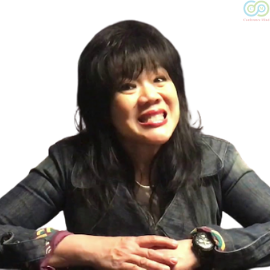
Huang Wei Ling
AcupuncturistBrazil
ABSTRACT
Introduction: Lymphoma is cancer that begins in infection-fighting cells (lymph nodes, spleen, thymus, bone marrow) of the immune system, called lymphocytes. In traditional Chinese medicine (TCM), lymphoma is caused by engenderment of phlegm dampness, caused by Spleen-pancreas deficiency. All cancer formation in TCM are related to deficiency in energy and formation of Heat. Purpose: Demonstrate that patient with lymphoma has chakras’ energies deficiencies and wrong eating habits and the corrections of these causes (diet and energy) is very important to balance the internal energy that leaded to the lymphoma formation. Methods: Two Cases reports: 46-year-old female patient with a history of treatment of non-Hodgkin lymphoma. Started treatment due to weakness, weight gain and depression. The second case report is a 62 years old man with lymphoma diagnosed in 2012. It was common the consumption of dairy products, cold water, raw food, and sweets in both patients. Radiesthesia procedure were done in both patients. The result of these measurement was that both patients were in the lowest level of energy (rated one out of eight with the exception of the seventh chakra that was in the normal level – rated in eight). Dietary changes: take out all dairy, consume warm water, grill or bake all foods, and withdrawn sweets. It was also done: auricular acupuncture with apex ear bloodletting, chakras’ centers measurement, crystal-based medication and homeopathies according to the theory Constitutional Homeopathy of the Five Elements based on Traditional Chinese Medicine. Results: Both patient are improving their self-esteem, reducing the weight, improving the physical and emotional aspects. Conclusion: The conclusion of this study is that patients diagnosed with lymphoma should be treated in the root-level, correcting all energy imbalances, mainly the Spleen-pancreas deficiency, using Chinese dietary counselling, auricular acupuncture, replenishing the chakras’ energies deficiencies with homeopathy according to the theory mentioned above and crystal-based medications, reducing the phlegm retention and replenishing the internal energies that was leading to the lymphoma formation according to TCM.

Nazeer Alli
University of WitwatersrandSouth Africa
ABSTRACT
Methaemoglobinaemia
Methaemoglobinaemia is defined as a methaemoglobin level of >1% in the circulating blood. The iron atom in haemoglobin is in the ferrous (Fe++) state whereas in methaemoglobin it is in the ferric (Fe+++) or oxidised state due to loss of an electron. Enzymatic processes within the red cell are responsible for efficient reduction of oxidised haemoglobin as well as protection of haemoglobin from oxidation. Methaemoglobin cannot bind oxygen and is therefore useless as a vehicle for oxygen delivery to the tissues. Thus the higher the level of methaemoglobin the greater the oxygen deprivation to tissues.
Causes of methaemoglobinaemia are numerous and varied, and may be classified under inherited or acquired (toxic). Symptoms depend on the level and rate of rise of methaemoglobin, ranging from tachycardia, cyanosis, headache, delirium, to coma and death. Important for obtaining the diagnosis is an accurate clinical history, family history and thorough physical examination.
This presentation impresses on aspects of pathophysiology, causation, clinical presentation, diagnosis and management.

Ilham Youssry
ProfessorEgypt
ABSTRACT
The pathophysiology of sickle cell disease (SCD) is complex and heterogeneous. Since described by Dr. James B. Herrick in 1910, there have been improvements in the understanding of the cellular dysfunctions that occur due to hemoglobin polymerization and that lead to multi-organ damage in this disease. Novel therapies are a result of such understanding of the pathophysiology of SCD. We conducted a PubMed search using the search terms “sickle cell disease,” “curative therapies,” “anti-oxidant,” “anti-adhesive agent,” “anti-inflammatory,” “anticoagulant,” “novel anti-sickling agents and HbF inducers,” “delay production of oxyHb.” Studies cited include case series, retrospective studies, prospective clinical trials, meta-analyses, online abstracts, and original reviews. The only approved long-life supportive therapy for SCD is the use of prophylactic penicillin, hydroxyurea, blood transfusion to decrease strokes and L-glutamine. However, HLA matched bone marrow transplantation is the only approved curative therapy for selected patients. The approved therapies for SCD over the last decades have improved life expectancies but have not solved many of the disease’s morbidities. Thus, many clinical trials are currently being conducted for testing novel multimodality agents that target different contributing pathophysiologic processes such as: agents that target the DNA mutation defects (curative therapies), hemoglobin polymerization (anti-sickling agents) and many other targeted therapies that counter-act cellular adhesion, inflammation, oxidant injury and platelets and/or coagulation. Deeper insights into the pathophysiology of SCD have led to the development of novel agents that target different contributing pathophysiologic processes and may solve many of the disease’s morbidities.
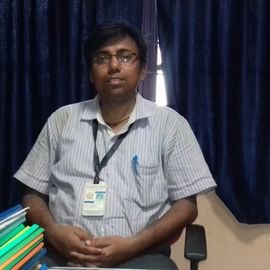
Pushpam Kumar Sinha
Assistant professorIndia
ABSTRACT
It is well known now that a rare and quiet population of Leukemic Stem Cells (LSCs) give rise to Leukemia [1]. The LSCs are the transformed counter-parts of healthy hematopoietic stem cells (HSCs) and or their multi-potent progenitors (MPPs) which have accumulated multiple genetic mutations in multiple steps spread over many years [2]. An attractive hypothesis regarding leukemogenesis is that an important final step of it is the up-regulation of cell proliferation genes and loss-of-function mutation in apoptotic genes [3]. If indeed it is so that apoptotic genes are mutated in LSCs, there should be no observed apoptosis of LSCs and leukemic blast cells at all.
But, however, an experimental study [4] indicated that there is significant apoptosis of leukemic cells in a variety of blood cancers, though its rate is less than the proliferation rate. I therefore hypothesize that not all of the apoptotic pathways are mutated in leukemia and that the apoptotic genes left un-mutated exercise their apoptotic effect through some conserved pathways. Through this talk, I take a deep look into these possible conserved pathways of apoptosis in leukemia. In particular, I talk about p-53, BCL-2 family members, miRNAs and siRNAs governed apoptotic pathways. I conclude that p-53, and pro-apoptotic BCL-2 family members governed apoptotic pathways are still active in leukemia post onset of disease. However, it is not possible to tell whether the apoptotic pathway is conserved or not in case of miRNA and siRNA, from known data.
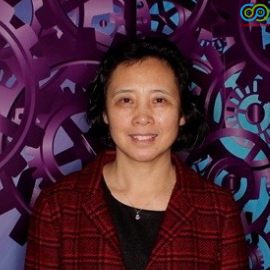
Shaoying Li
Associate ProfessorUSA
ABSTRACT
High grade B-cell lymphoma with MYC, BCL2 and/or BCL6 rearrangements, or double/triple hit lymphoma (DHL) has been defined by 2016 WHO as a B-cell lymphoma with MYC/8q24 rearrangement in combination with a translocation involving another gene, such as BCL2 and/or BCL6. The most common form of DHL has translocations involving MYC and BCL2, also known as MYC/BCL2 DHL. In the past few years, numerous case series of MYC/BCL2 DHL have been reported in the literature. Most cases of MYC/BCL2 DHL morphologically resemble diffuse large B-cell lymphoma (DLBCL) or high grade B-cell lymphoma, not otherwise specified (previous name in 2008 WHO: B cell lymphoma, unclassifiable, with features intermediate between DLBCL and Burkitt lymphoma). These tumors have a germinal center B-cell immunophenotype but an aggressive clinical course characterized by a high proliferation rate, advanced-stage disease, extranodal involvement, high International Prognostic Index score and high serum lactate dehydrogenase levels. All tumors have a complex karyotype. Despite a variety of therapeutic approaches that have been used to date, patients with
DHL have a poor prognosis. Here we will discuss the clinicopathologic, immunophenotypic, cytogenetic, and prognostic features of DHL and some remaining issues.
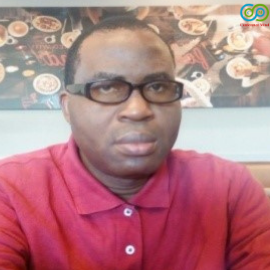
Ogbonna Collins Nwabuko
Assistant ProfessorNigeria
ABSTRACT
Background: Multiple myeloma (MM) is one of the commonest haematological malignancies with orthopaedic complications due to its skeletal related events (SREs) such as chronic bone pain, osteoporosis and pathological fracture.
Objective: The objective of this study is to promote the campaign on awareness and periodic screening for MM in the middle-aged to elderly (≥40 years) target group.
Methods: This is by systematic review and literature search of evidence-based research articles on MM, especially in sub-Saharan Africa and the theoretical behavioural frameworks to effect the desired change in the target population. Four key terms: Multiple myeloma, Awareness, Screening, Health Promotion/Campaign were used as medical subject headings (MeSH) to identify the records of relevant database to design the Problem Intervention, Comparison, Outcome (PICO) research questions. MedLine, PubMed, Google scholar, Cochran Database Systematic Review (CDSR), Cumulative Index of Nursing and Allied Health Literature (CINAHL), African Journal Online (AJOL) were used as the search database.
Results: The expected outcome will be the adoption of the campaign innovations in all perceived susceptible group as evidenced by early screening and treatment.
Conclusion: The successful execution of this campaign policy will increase awareness and case ascertainment of MM in the targeted population. The hallmark will be early diagnosis and improved life expectancy of people living with MM in the region.

Wei Ling Huang
AcupuncturistBrasil
ABSTRACT
Introduction: Autoimmune hemolytic anemia is a acquire hemolysis caused by the immune system acting against its own red cells antigens. The diagnosis aims to identify laboratory and clinical evidence of hemolysis with direct anti globulin test. In traditional Chinese medicine, all autoimmune diseases are formed by deficient Yin energy and Heat retention. Purpose: to demonstrate that autoimmune hemolytic anemia has an energy deficiency in the back ground and the correction and replenishment of the chakras’ energies centers are important to rebalance the internal energies leading to improvement of the patient´s physical condition and contributing to improving the symptoms and signs of this patient.
Methods: one case report male patient with history of auto immune hemolytic anemia that was only worsening his condition with the medications prescribed (highly concentrated medications). He went to the author´s clinic with intention to change his life as his hematology didn´t authorize him to do sleep in another place without her…He received treatment with Chinese dietary counseling, auricular acupuncture with apex ear bloodletting and highly diluted medications and crystal based medications. Results: After one week of treatment, he was feeling much better and impressed with the clinical improvement he had only changing the dietary aspects and others. Conclusion: patients with autoimmune hemolytic anemnia disease, has chakras energies centers in the weakest level of internal energy and the corrections of these energies imbalances thought Chinese dietary counseling, auricular acupuncture with apex ear bloodletting and replenishment of the chakras ‘energies centers with highly diluted medications such as homeopathies according to the theory Constitutional Homeopathy of the Five Elements based on Traditional Chinese Medicine are important tools in the treatment of this autoimmune disease.
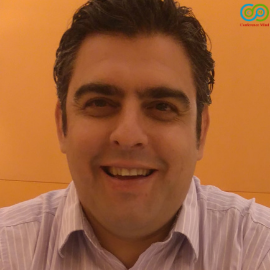
Pedro C Redondo
University of ExtremaduraSpain
ABSTRACT
Calcium homeostasis is crucial for platelet function and Store Operated Calcium Entry was found to be the main Ca2+ entry mechanism in non-excitable like in platelets1. SOCE relays in the association of the DTS, STIM1, and the plasma membrane calcium channels, Orais and TRCPs2. Changes in the Ca2+ homeostasis of neonate platelets were early described3, but most of the main components of SOCE were unknown by that time1,2, which has been revisited in the present research work. mRNA analysis and protein evaluation by Western blotting revealed interesting differences between neonate platelets and platelets from adults like the one shown in the Figure representing STIM1 and SARAF (Fig A), which are relevant for SOCE and therefore, those changes may explain the physiological and functional changes in neonate platelets previously described by others (Fig B and C)4. Here, we describe some of these key proteins involved in Ca2+ entry through SOCE that are modify in neonate platelets.

Ilham Youssry
ProfessorEgypt
ABSTRACT
Hemophilia A is a monogenic disease due to reduction or complete absence of coagulation factor VIII. Bleeding from various sites is the major symptom of this disease. Since described in year 1828, many novel therapies have been approved to overcome the disease morbidities. However, the development of the neutralizing antibodies, reduced availability of venous access and nonadherence are still challenges that impede the care to hemophilia A patients. Therefore, the development of non-factor therapy as anti-TFPI, Emicizumab and gene therapy may bring a bright future for hemophilia A patients. Hereby, we discuss some novel non-factor therapies for Hemophilia A patients that overcome the challenges and improve the patients’ quality of life.
Comparative evaluation of cardiac specific markers/transcription factors of human amniotic fluid mesenchymal stromal cells (AF-MSC) versus c-Kit+ve AF-MSC

Manali Jain
PhD ScholarIndia
ABSTRACT
Recently we have demonstrated that AF-MSC significantly expressed higher levels of structural cardiac markers like cTNT, β MHC, ASA and cardiac transcription factors viz. GATA-4, ISL-1 and NKx2.5 than that of Bone Marrow MSC (BM-MSC). Thus, highlighting the superior cardiomyogenic potency of AFMSC in comparison to BM-MSC. c-Kit is an important marker of cardiac progenitors and about 1-3% subpopulation of AF-MSC expresses this marker. Hence, the subpopulation of AF-MSC expressing cKit may represent better fetal stem cells primed towards cardiomyogenic lineage as compared to whole AF-MSC. However, till date no direct comparison has been done to evaluate the cardiac differentiation potential of AF-MSC versus c-Kit+ve AF-MSC.
Computational approaches could help develop network-based precision/personalized medicine for hematologic malignancies

Subhadip Raychaudhuri
Assistant ProfessorIndia
ABSTRACT
In malignant diseases, gene mutation based stress response (in individual cancer cells) frequently replaces apoptotic stress response control of higher organisms. We have developed detailed mathematical and computational models to investigate mitochondrial apoptosis, which is mediated by a complex interaction network of Bcl-2 family proteins. Our findings indicate that altered kinetics & stochastic fluctuations in cancer cell apoptosis could tip the balance towards genetic mutation based stress response. In this talk, we explore factors such as genetic changes, growth/survival signaling and cytokines that have anti-apoptotic impacts on Bcl-2 family proteins, thus elucidating the basis for altered kinetics in apoptotic stress response, tumorigenesis and chemoresistance generation. We will discuss applications of computational simulations and machine learning approaches in evolving precision/personalized strategies for treating hematologic malignancies. In addition, we will address the impact of aging in hematologic malignancies based on published data that correlates increased levels of certain cytokines (having anti-apoptotic potential) with harmful senescent phenotypes.



